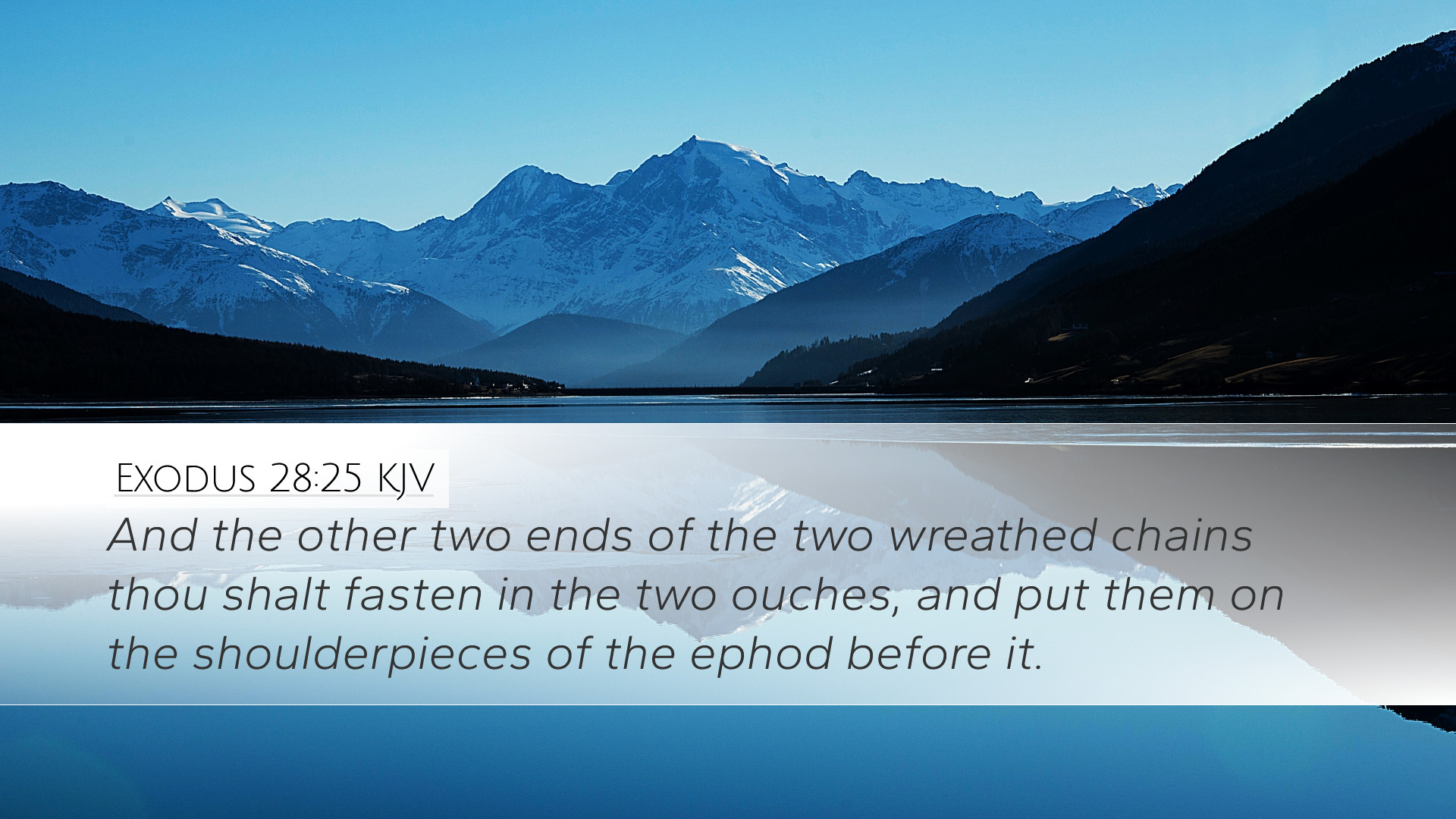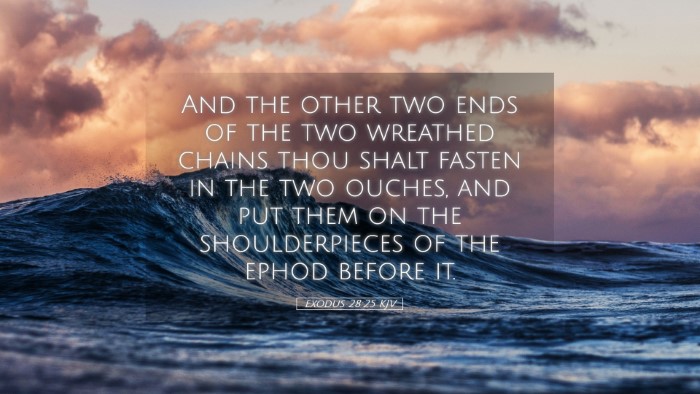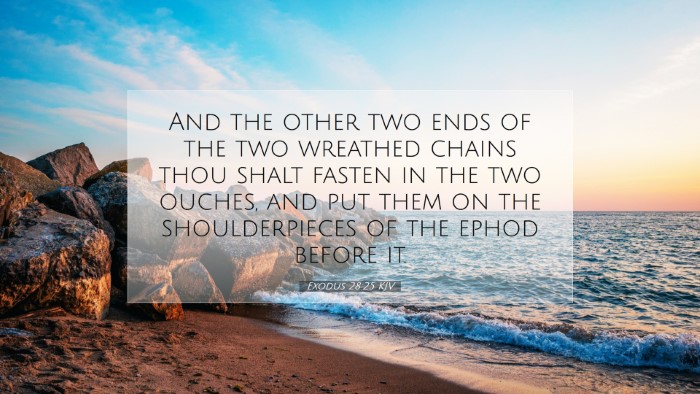Exodus 28:25 - Commentary Summary
Exodus 28:25 states: "And the other two ends of the two wreaths shall be in the two sides of the ephod." This verse is part of the instructions given by God to Moses regarding the priestly garments, specifically the ephod worn by the high priest. This commentary aims to draw insights from several public domain commentaries, integrating the thoughts of Matthew Henry, Albert Barnes, and Adam Clarke.
1. Understanding the Context
Before delving into the specific verse, it is crucial to understand the surrounding context of Exodus 28. This chapter details the garments intended for Aaron and his sons, emphasizing their role as priests leading the worship of God.
-
Matthew Henry:
Henry emphasizes the importance of the clothing in relation to the office of the priesthood. He notes that the garments are not merely for adornment but signify holiness and the need for a mediator between God and man.
-
Albert Barnes:
Barnes remarks that the ephod represents the access to God that the high priest has, connecting humanity with the divine. The specifics of the design, including the wreaths mentioned in this verse, indicate the careful consideration in the construction of priestly attire.
-
Adam Clarke:
Clarke highlights the symbolic dimensions of these garments, illustrating how they reflect spiritual truths. The ephod's structure is a tangible reminder of God's covenant with His people.
2. Symbolism of the Ephod
The ephod is more than just a physical piece of clothing; it carries substantial spiritual symbolism. The mention of "wreaths" suggests a design that is intricate and intentional.
-
Matthew Henry:
Henry interprets the wreaths as emblematic of God's glory encircling the priest, signifying that true honor comes from God alone. The wreath becomes a symbol of the priest's role in representing the people before God.
-
Albert Barnes:
Barnes posits that these wreaths, binding the garment, show the connection and unity required in the priestly office, indicating that the high priest is to carry the names of the tribes on his heart and shoulders.
-
Adam Clarke:
Clarke suggests that the ornamental features of the ephod remind believers today of the beauty and intricacy of God's design in His covenant and His faithful guidance through leadership.
3. Theological Implications
From a theological standpoint, this verse is rich with implications for understanding the priesthood of Christ and the implications for Christian ministry.
-
Matthew Henry:
Henry draws parallels between the Old Testament priesthood and the New Testament understanding of Christ as our ultimate High Priest. Just as the priest was adorned to represent the people before God, Christ fulfills this role perfectly.
-
Albert Barnes:
Barnes highlights the continuity between the roles of the Old Testament priests and those in the Christian church. The mention of the ephod points to the necessity of being equipped for the ministry, reflecting the clergy's fashionable devotion to God’s service.
-
Adam Clarke:
Clarke asserts that the splendor of the ephod underscores the dignity of ministry — a call to holiness and service that continues through the Church today, with all believers acting as a royal priesthood.
4. Practical Applications for Believers
While the direct application of this verse involves priestly garments, the transitions to personal spirituality and service for modern believers are profound.
-
Matthew Henry:
Henry encourages the faithful to consider their own spiritual attire, urging believers to clothe themselves in virtues that reflect Christ's character, akin to the priest's garments.
-
Albert Barnes:
Barnes emphasizes the importance of being conscious of one's role in the body of Christ, utilizing the gifts and graces bestowed to serve others, much like the priest cared for the needs of the Israelites.
-
Adam Clarke:
Clarke relates the concept of being 'arrayed in righteousness' as a modern equivalent, wherein believers are called to adorn themselves with good works and integrity, reflecting their high calling in Christ.
5. Conclusion
Exodus 28:25 encapsulates the pivotal role of the ephod in the priestly office, as interpreted through the insights of respected commentaries. Understanding this verse through the lenses of Matthew Henry, Albert Barnes, and Adam Clarke reveals its deep significance in how God desires His priests (both Old Testament and New Testament) to approach Him and how they represent Him to the people.
As pastors, students, theologians, and scholars delve into these interpretations, may they find inspiration not only in the historical and theological implications but also in the call to embody the holiness and dedication that the high priest exemplified.


